A smooth running engine is an efficient engine. Thanks to the advancements in computer controlled engine management, keeping today’s Nissans running great is easier than ever.The flip side of that coin is that, when things do go wrong, the knowledge required to repair a problem is more advanced than ever. Whether it’s a rough runningengine or a simple loss of fuel efficiency, let’s take a look at those hard to find run-ability problems.

The days of actually tuning an engine are quickly coming to an end. In the not too distant past a mechanic would have to turn screws on a carburetor, adjust the timing, set the choke, test drive and do it all over again if something wasn’t quite right. It wasn’t just a science, it was also an art getting the engine to run its best through the entire rpm range.
Times have changed. What once was controlled by a metered orifice that was prone to clogging has been replaced with an impressively complex algorithm in the ECM. Today’s vehicles don’t just have control of the ignition timing, they control the timing of the valves in ways that boggle the mind. With the aid of scan tools, data systems, and an internet-connected community of technicians that are always willing to help, even the most mysterious engine run-ability problems don’t stand a chance against you, the educated diagnostic technician.
At the core of modern engine management are computers that are constantly monitoring the performance of the engine. This is partly because they are required by the laws that brought us OBD II and partly because it’s good old fashioned common sense. Many values that are critical to a smooth running engine are monitored by the computer to allow perfect adjustment on the fly.
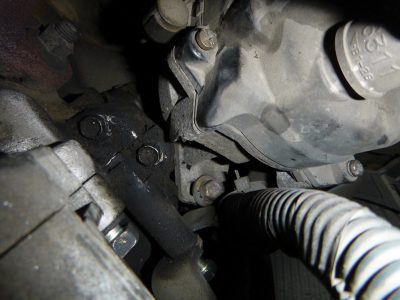
Air/fuel ratio is monitored by the oxygen sensors for fuel control. Detonation or pinging are monitored by the knock sensor for timing control. Intake air temperature, manifold vacuum, and a dozen other readings all come together for the ECM to adjust the engine “tuning” as you drive. On top of that the ECM will also monitor for other signs that the engine is running the best it can, like catalytic converter and misfire monitoring.
There are a few examples of Nissan engines that fill the gap between “needing to be tuned” and “computer controlled,” like the late 1990s 3.3L and 2.4L you would find in a Pathfinder or Frontier. On the 3.3L the distributor sits on the left cylinder head and is driven by the left camshaft. Looking at the mounting bolt you may notice it has a slot. Whenever you see this slot it means the timing is adjustable. As little as 5 degrees out of base timing can make it difficult for the ECM to keep the engine running smoothly.
Although the procedures may be slightly different for some models, the basic principles are the same. Let’s adjust the timing on a 1998 Pathfinder that uses this engine. First warm the engine up to operating temperature. Next turn off the key, unplug the TPS, and start the engine again. This disables the ECM timing control and allows you to adjust base timing.
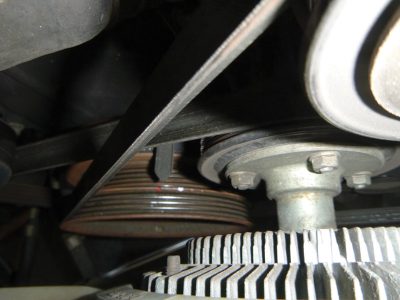
Connect a timing light to the spark plug wire at cylinder number 1, that’s the first cylinder on the right-hand bank. Aiming the timing light at the crankshaft pulley, loosen and rotate the distributor until the pointer lines up with 10 degree BTDC mark, or use your dial-back timing light as directed. Re-torque the distributor mounting bolt and double check that your pointer is still at the right mark.
As the ECM discovers something not quite right with the engine it will indicate to the operator with an all too familiar MIL. Most of the time the code stored will lead you straight to the system at fault, and in a lot of cases will directly tell you which sensor or solenoid has failed. Just follow the OEM diagnostic tree in the OEM service manual and you will have a solid diagnosis with time to spare.
There are, however, times when the code stored isn’t so straightforward and, worse, there are times when no code is stored at all. Where do you start when the engine just isn’t running right?
Making sure the ECM is actually functioning can save a lot of headaches. Using a scan tool, check that the OBD II monitors have cleared. Ground points at the transmission and chassis can become loose, corroded, or even break from vibration stress.
With poor grounding the ECM cannot function properly. You may find it will lose its memory each time the engine is started, preventing any codes from being stored. On top of that the loose ground can also cause misfires by affecting the coils and fuel injectors. Although not common, a poor ground has even been known to cause coil failures. If you find multiple melted coils, or repeated coil failures, double check your grounding with a wiggle and voltage drop test.
When a misfire is indicated with codes P0301-P0308, it is primarily in a single cylinder, making it fairly easy to nail down what’s wrong. By isolating the spark plug, coil, compression, and fuel delivery for the cylinder indicated, the diagnosis is straightforward.
What about the code P0300? This code indicates a random misfire. This is the ECM’s way of saying “the engine is running rough.” The diagnostic procedure is different in that you have to look at the entire engine as a whole machine and focus less on the individual cylinders.

Start by observing the way the engine actually runs. Is it rough at an idle? Does it lose power under acceleration? Does it have trouble keeping a steady rpm? Is it the same with the engine hot or cold? Is it the same with the weather wet or dry? All of these could be considered different symptoms. Using a solid knowledge of how the engine works and understanding some basic engine management strategies the ECM uses, you can isolate the issue down to a general system (like fuel delivery, air intake, core mechanical, etc.) and further isolate to a specific system and the problem.
Take the example of a couple’s third car that has been parked in the driveway for the last three years without moving. It may start with a booster battery but will not likely run very well. Bad fuel, critters in the intake, and corroded electrical connections can all cause poor engine performance. The 3.5L often found in Quests and Altimas has an intake valley that is a perfect nesting place for small rodents, for example. Perhaps the vehicle was parked due to a poor running engine or poor fuel economy. Asking your customer may jog their memory and let you know there may be more than simply time to consider.
Typically, a vehicle parked for extended periods will have had a dead battery at some point so stored codes are not likely going to be of any help. After draining any bad gas and checking the oil and coolant, fill the tank with new gas. Is the fuel filter serviceable? Can you perform a fuel rail cleaning? Any spoiled fuel that may have run though the engine can cause sticky deposits in the injectors and affect performance.
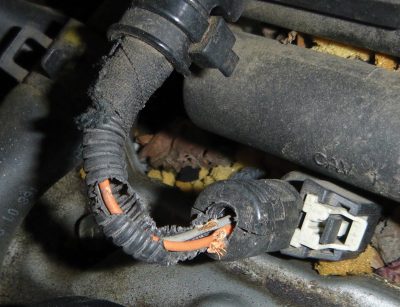
Once the engine is running you can listen for unusual lifter or timing chain noise as well as feeling if the engine is running smoothly. Being cautious when first starting a car out of storage may let you catch a serious problem before it gets worse. Identifying misfires is part of that caution.
A very important step in diagnosing a misfire code is verifying when the engine is actually misfiring. A misfire at idle for example may indicate a fuel control issue like a vacuum leak or faulty MAF sensor. A frequently overlooked possibility is a clogged EGR valve. If the EGR valve were completely clogged it would not cause a misfire, just a MIL for insufficient flow.
What can happen is, soot will build up and cause the valve to not fully seat; this allows exhaust into the fresh air stream. At cruising rpm this will cause no problems, as the percentage of exhaust in intake is low. At idle, however, the amount of air flow is much lower, and the exhaust displaces a much higher percentage of the fuel/air charge.

Many engines like the 3.5L in Altimas and Quests use a valve in a tube between the exhaust manifold and the intake manifold. These engines have a temperature sensor on the intake side of the EGR valve that can be monitored. If you are starting with a cold engine, an even easier way is to simply feel for heat from the EGR tube (careful, a bad failure can get really hot). If the tube is getting warmer at idle, exhaust is flowing through it, causing an imbalance in the fuel trim and ultimately a misfire.
Intermittent run-ability issues can be very frustrating. Checking TSBs for common failures and even picking the brains of the more experienced techs in the shop can save you a lot of time. As vehicles age, the same parts will typically fail with the same results.
It’s important to realize, in diagnostics, that improbable doesn’t mean impossible. When you are following the diagnostic trail, skipping steps can cost you time. One not so obvious example would be assuming spark plugs aren’t the cause of a P0300 code.
If you look at most Nissan V-6s, the intake manifold covers half of the spark plugs, making them very difficult to check. To save time a technician might pull a plug or two from the front bank and assume, since they are new, that the rear plugs are OK too. No one would change just the front plugs, right? With a 3.5L in a mid-2000s Nissan Quest, getting to the rear plugs is going to take up most of your day. It’s not unheard of for a DIY mechanic to just change the three easy plugs and not finish the job.

If your codes indicate P0301, P0303, and P0305 indicating cylinders 1, 3, and 5 are misfiring, pulling the intake and checking those plugs, coils and fuel injectors is the next step. If you only have a P0300, indicating a random misfire, you may still have specific cylinders causing the problem, just more than one. It can still be a spark plug, coil or fuel injector issue on more than one cylinder.
With any luck your scan tool will have a power balance graphic or misfire counter that can give you an idea which cylinders are missing. Another possibility is an “injector kill” test. Often you can use your scan tool to individually turn off injectors while monitoring the engine rpm. The more the rpm drops when you kill the injector, the better that cylinder is running. No change at all would indicate a dead cylinder.
If neither one of those options will work in your situation you may be able to at least isolate which bank is having a problem. Simply run the engine at idle and monitor the performance of the catalytic converters via the post cat oxygen sensors. If the bank 2 catalytic converter is smoothing the oxygen sensor signal and the bank 1 catalytic converter isn’t, it may be an indication you have a problem with cylinders 1,3, and 5. It seems like a lot of steps, but these tests are quick, they may identify individual cylinder failures, and help simplify your diagnosis.
Not all misfires originate from engine control systems. With today’s quality metals engines seem to last forever. It’s easy to forget, but on occasion an engine will run poorly simply due to mechanical failure. A blown head gasket, worn piston rings or improper valve timing can all manifest in a rough running engine. With any luck you will have other signs like a plume of white smoke out the tail pipe, or a loud ticking under the timing cover. It is possible to simply have worn piston rings that can’t keep compression high enough to run properly.
With one simple test you can quickly identify if you have a core engine problem. Connect an accurate vacuum gauge to direct intake manifold vacuum. Be certain the connection doesn’t have a check valve in-line. If manifold vacuum is fluctuating wildly, further mechanical engine testing is in order.
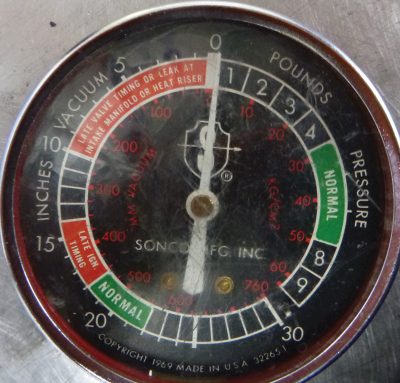
If compression is smooth and consistent in all cylinders, the vacuum will be steady and you can rule out most internal engine problems. The exception would be certain head gasket failures. If a head gasket failure is suspected, test for combustion gases in the coolant with “block check” tool.
With experience you will be able to recognize common symptoms quicker each time you see the same failure. Another often-forgotten learning tool is looking at data from a good running engine. Much like a banker spotting counterfeit bills, the more you are familiar with good data the easier you will spot bad data. This would also include paying attention to the way an engine feels on your test drive for a brake job, so that when the same model comes in for performance issues you’ll be ready. It’s tough to diagnose “running bad” if you don’t know what “running good” feels like.

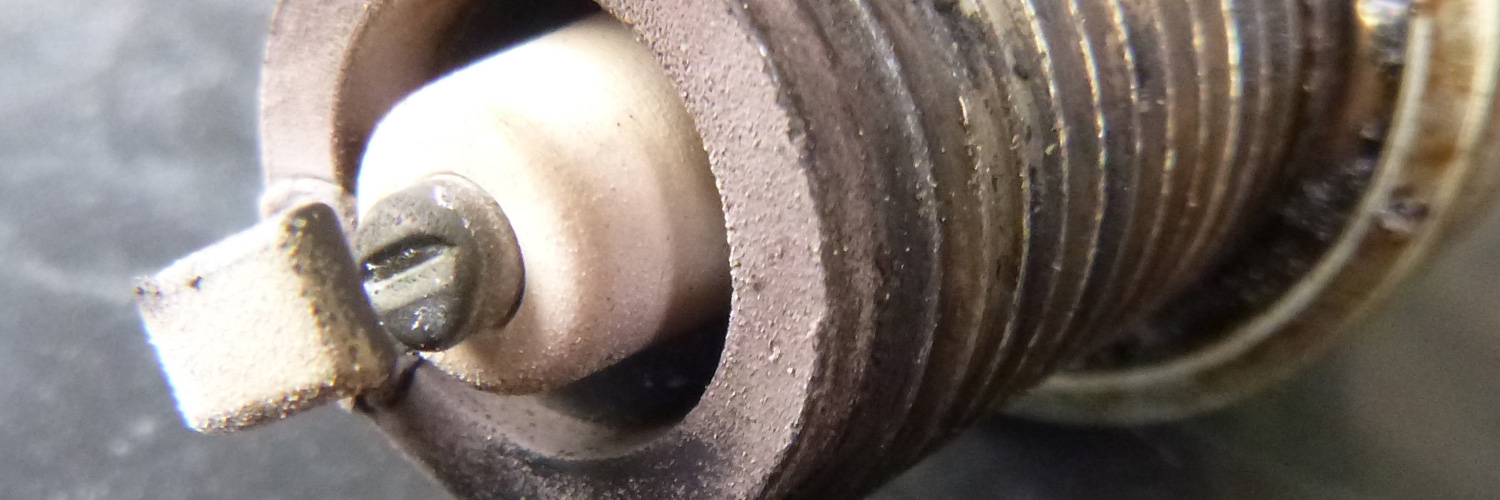




0 Comments